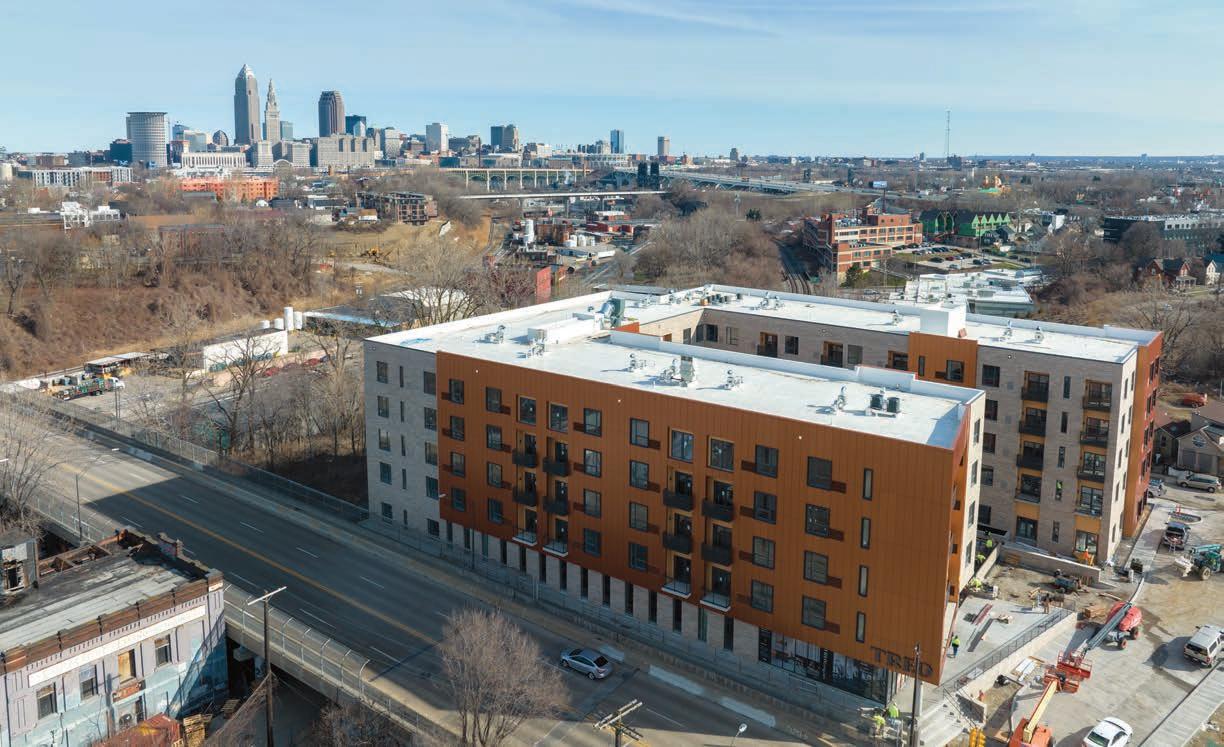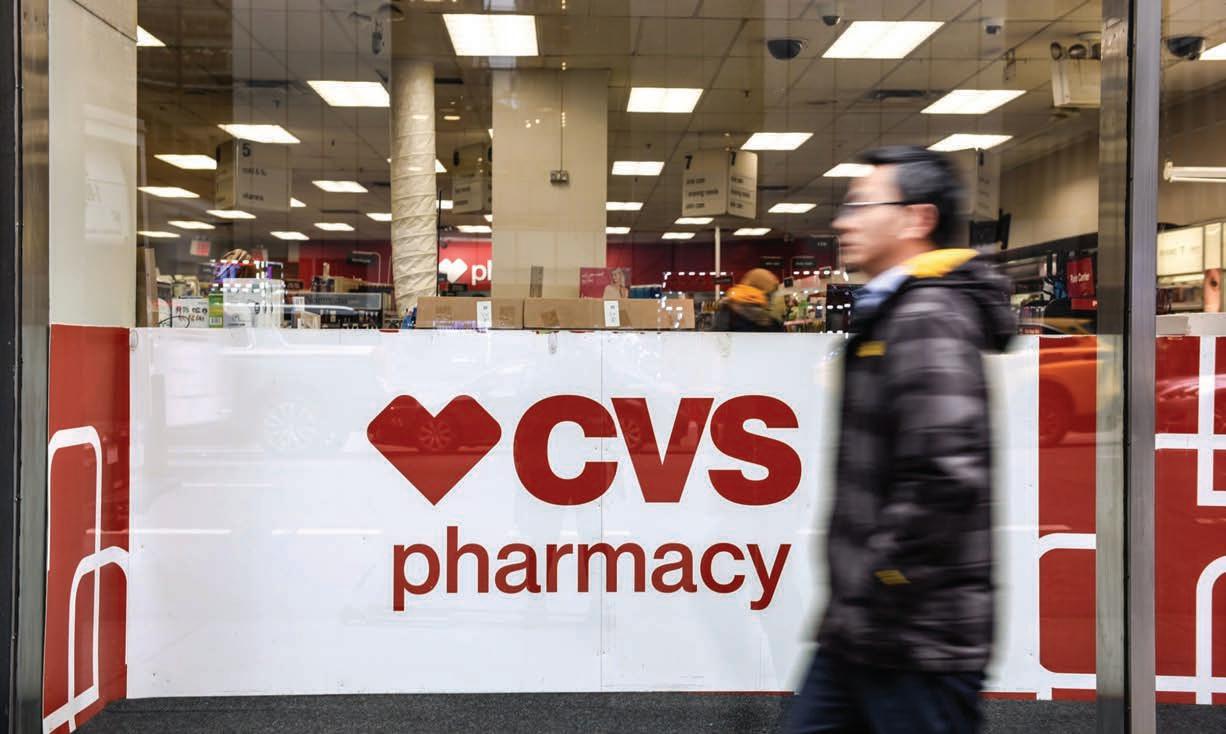
8 minute read
New Deal for New Americans Act bene ts more than newcomers
BY GWENDOLYN KOCHUR
On Tuesday, March 21, the New Deal for New Americans Act was reintroduced in Congress. This is a cause for celebration for immigrants across the nation, but current citizens have reason to celebrate, as well.
Advertisement
e New Deal for New Americans Act (NDNA) introduces measures that will allow prospective new Americans to naturalize more easily, including establishing a at naturalization application fee, amending exam requirements for older applicants and exempting eligible immigrants who graduated high school in the U.S. from taking naturalization exams.
ese measures will, of course, bene t newcomers who want to become citizens, but the impact of NDNA and a smoother naturalization process will be far-reaching.
At Global Cleveland, we often talk about how integrating international newcomers into our workforce is essential to accelerating Northeast Ohio’s economy. Immigrants and refugees have to navigate certain barriers in order to work in the U.S. — barriers that Global Cleveland is trying to help employers overcome — while some may not be permitted to work at all.
workforce and lling the gaps that many employers have been experiencing.

Demonstrating the effectiveness and mutual benefits of naturalization is a study conducted by the Urban Institute titled “The Economic Impact of Naturalization on Immigrants and Cities,” where researchers found that the fiscal impact of international people naturalizing is “overwhelmingly positive.” After surveying data from 21 cities, it was concluded that immigrants who could naturalize would increase earnings by 8.9%, tax revenue would increase by $2.0 billion, and combined earnings for the 21 cities would increase $5.7 billion.
NDNA will also establish grant programs for community-based organizations that provide English classes, legal services for immigration relief applications, and workforce development training, all of which will help new Americans thrive.
THE MEASURES IMPLEMENTED BY NDNA CAN VERY WELL BE A CATALYST TO SUPPLYING OUR EMPLOYERS WITH MORE READY-TO-WORK EMPLOYEES.
In contrast, naturalized citizens are granted far more opportunities to work. e ability to check the “I am a U.S. citizen” box on a resume opens many doors for new Americans that may have been closed to them before naturalizing. It also provides budding entrepreneurs with a smoother pathway to starting business endeavors.
It’s projected that there will not be enough educated workers for in-demand jobs in Northeast Ohio by 2025, according to a report released by Team NEO. e bottom line: We need more individuals in the workforce. As NDNA paves an easier road to naturalization, we will see more foreign-born, American citizens entering the e bene ts that NDNA will provide to immigrants and refugees are many. We all should support this legislation because of how it will protect and provide for international newcomers, as well as for how it will bene t our communities and region as a whole — because when our international community thrives, so does Northeast Ohio. We urge you to call or email your senators and congress members to encourage them to support the New Deal for New Americans.
The measures implemented by NDNA to ease naturalization processes and fund resources that help individuals transition to being an American can very well be a catalyst to supplying our employers with more ready-to-work employees.
NDNA’s measure to increase the refugee admissions level to 125,000 per scal year allows for thousands of more individuals to secure a safe life and career in the states, all while bolstering and diversifying the U.S. population.

U.S. Black Chambers Inc. honors Downtown Cleveland Alliance leader

Heather Holmes Dillard, executive vice president of external a airs at the Downtown Cleveland Alliance (DCA), was recently honored by the U.S. Black Chambers Inc. (USBC) for her community impact as part of the group’s 2023 Women of Power “Power 50” list. e annual USBC Power 50 honor is given to 50 notable Black women, leaders in the business, education, arts, sports, entertainment, philanthropy, technology and social justice sectors, “who embody the spirit of the organization and an unwavering dedication to making a di erence in their communities and in the world at large,” according to a statement about the award.
e honor would not have been possible if Dillard had not left Ohio in her 20s and worked as part of the grassroots team — along with Ron Busby Sr., the Black Chambers president and CEO — to create the national organization in 2009.
Crain’s sat down with Dillard to discuss the importance of the U.S. Black Chambers, her boomerang back to Cleveland and what her favorite projects have been while working with DCA.
This interview has been edited for length and clarity.
` Prior to relocating back to Cleveland, you helped establish the formation of the U.S. Black Chambers Inc., organizing the branding efforts and helping produce the first national conferences. Talk a little bit about that.
I was about 20-something with all the courage in the world, so I packed my one little suitcase, left my condo in Shaker Square, left my car and moved to Phoenix. I saw that the Phoenix Black Chamber of Commerce was having a monthly member meet-up and decided to go, just to introduce myself to the city.
I met a gentleman who had just taken over the Phoenix Black Chamber. He had the largest Black-owned janitorial company in the state of Arizona. I volunteered my time and I never left. Remember this is in a city with around 2%-6% Black population. Within a couple of years, we got a call from a man with the largest Black Chamber in the country, out of California, who wanted to start a national U.S. Black Chamber of Commerce in Washington, D.C.
I went around the country to every city and local Black Chamber dinner or
— Kim Palmer
major event, and we galvanized and rounded up those chapters to make a national Black Chambers organization. Within a year, we have about 100-150 local chambers signed up, and by that time President Barack Obama was in office, and eventually we were invited to the White House so that he could have briefings with Black business owners.
When we got to D.C., I realized there were lobbyists for every type of group and organization imaginable, for every interest and entity except Black-owned businesses, and this was back in 2007. Now the USBC has helped to champion legislation that is simple but gamechanging in the long run, including bills that help get faster payouts for government contracts to minorityowned businesses.
` You are a boomerang — someone who after leaving and having success in your career came back to Ohio. What motivated you to do this?
I grew up here in Cleveland, went to college at Bowling Green State University. My father has family in Toledo. I’ve always been raised by a village here. My first job out of school was working for Cleveland Mayor Jane Campbell, and then my second job was working for my aunt, who owns her own public relations firm, before I moved. on the redesign of Public Square as part of the run-up of the Republican National Convention in 2016. and watch and see the conversations between the pedestrians and artists.
After I had my son, I thought it was important for my kids to have the experience I did growing up with this village around — which is something I think is very unique to our community. I noticed, too, that a lot of my classmates from K-12 were starting to relocate back to Cleveland. I just don’t think you can beat the culture here in the community.
` What is your favorite part of your work with the Downtown Cleveland Alliance?
I always nd joy in helping create partnerships where they did not exist before. I love championing things that are valuable to me, and I love my city and I love to promote Black businesses. As best I can, I have found ways to help connect those dots between those two things: nding ways to make my city shine and to give opportunity to Black entrepreneurs where it makes sense.
` How did your work with the USBC inform what you are doing now?
When the civil unrest happened in Cleveland during COVID, after the George Floyd murder, I got a call from Mayor Frank Jackson’s administration — asking for help to gure out what to do about all of the boarded-up windows.
` Is that a de ning element of your career — bringing people together?
DCA was the host committee for the 2021 NFL Draft, when there were no special permits and no large gatherings of people. We had to work with partners to thoughtfully program in those public spaces with the fan base in mind. We worked with Playhouse Square to have watch parties with intentional distancing.
After the NFL Draft, Mayor Justin Bibb opened up applications for special events again and immediately, we applied to do a Juneteenth festival. In six weeks, it turned into a 10,000-plus person festival and celebration of arts, culture and Black excellence.

I learned about the Downtown Cleveland Alliance, which I had never heard of before, because it didn’t exist when I was here. I started working as the director of marketing — which was appealing to me because no matter where I traveled, I would talk up Cleveland anyway. If you knew me, you knew I was from Cleveland. I’ve been the city’s unofficial ambassador my whole life. The opportunity to help to make and brand the place that made me was so exciting.
And the first day on the job was the first day the city started construction
I made similar calls to my partners at LAND Studio, Playhouse Square and Destination Cleveland, and we came up with the idea for what is now called Cleveland Walls. The idea was to quickly animate downtown spaces so it didn’t look like a war zone, and we created a mural project.
The project is a connection between property owners or business owners and an artist, and since it started, we have had more than 300 artists sign up and more than 115 businesses involved. We have had pop-up camps in the middle of Public Square with about 20-plus artists so that people can just walk by the art and begin conversations.
It took a lot of bringing together people, leaders, funders and institutions who had never worked in that capacity together. It is just amazing to sit there
I think that across the city, the silos are coming down. I’m very excited about all of this new leadership across the region, and I’m excited with the level of conversations happening between the city and county, the Greater Cleveland Partnership, Destination Cleveland. There is a new energy and a new sense of urgency.
` It is quite an honor to be named on this list of Women of Power. What is it like to receive this national award?
Ron Busby Sr., the Chamber president and CEO, wanted to acknowledge me as somebody who really helped to get the organization going. It is an acknowledgement of my work professionally and things that I’ve been able to do since I’ve moved back to Cleveland.
I never thought I would want to receive this type of acknowledgement. I like my position in the background, but when I think of my 5-year old daughter, what she needs to see, I want her to be able to be proud of me and what I’ve accomplished here. Sometimes you have to take a bow.
Kim Palmer: kpalmer@crain.com,
(216)
771-5384, @kimfouroffive











